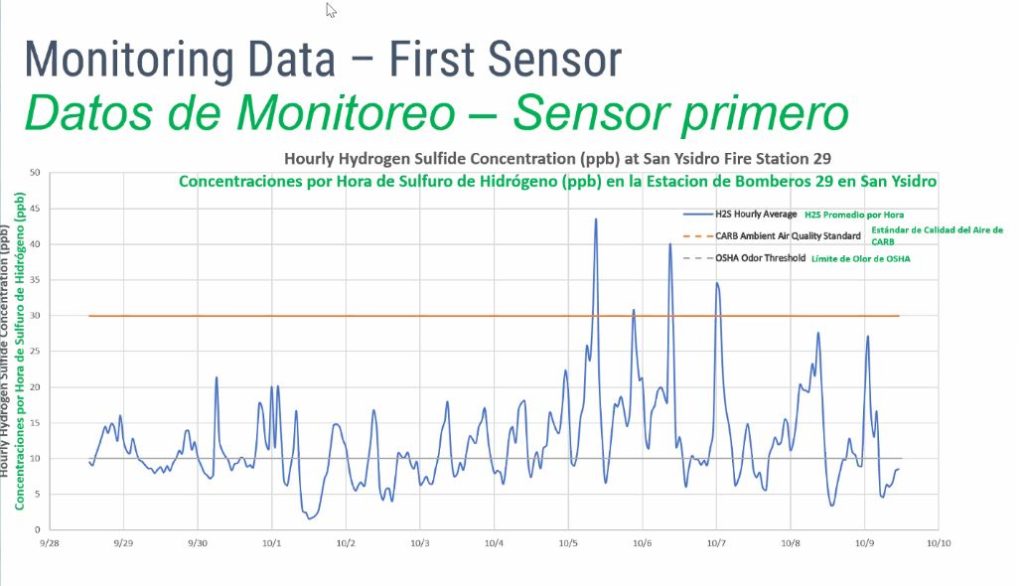
Dane Crosby has lived in Imperial Beach for 44 years. This year, he said, the smell of sewage has been worse than ever.
Six sensors to monitor air quality are coming to South Bay in an effort to collect comprehensive data about how smells from the Tijuana sewage crisis impact communities.
“What we see being our role is collecting data that can help us put a number to what the odors are that people are reporting to us,” said Kevin Bradley, a senior chemist for the San Diego County Air Pollution Control District (SDAPCD).
One monitoring station was implemented in San Ysidro on Sept. 28 and is already collecting preliminary data, but the SDCAP will add five more using funding from a U.S. Environmental Protection Agency Border 2025 grant.
“The data is really backing up what we’re hearing from the community, in terms of smelling this (sewage) pretty constantly,” Bradley said during a public update meeting hosted on Oct. 31 by the EPA and the United States International Boundary and Water Commission (IBWC).
The sensors will test not only for sources of the sewage smell that has become a familiar part of life for South Bay residents, but also, for wind speed and direction, temperature, pressure, and humidity.
The SDAPCD will share its data with other agencies in an effort to better study the impact the sewage crisis has on air quality – and the ramifications of that impact. The agency will also release an online monitoring site so the public can also monitor.
Hydrogen sulfide is the most common culprit of the smell. At three separate occasions between Oct. 5 and 7, the concentration of hydrogen sulfide spiked higher than the California Air Resources Board (CARB) Ambient Air Quality Standard.
However, the concentration measured in San Ysidro last month would still be considered a nuisance, not a health concern. The CARB reports that high concentrations of hydrogen sulfide can cause serious health concerns at exposures greater than 50 parts per million, but those are rare outside of industrial accidents.
In San Ysidro last month, the highest concentration of hydrogen sulfide crept up toward nearly 0.045 ppm; the CARB standard sits at 0.03 ppm.
“Of course, a nuisance standard will still affect your quality of life,” Bradley said.

The concentration level was frequently measured above the Occupational Safety and Health Administration (OSHA) Odor Threshold, which is the point at which the human nose can smell hydrogen sulfide.
The proposed new monitoring stations are at Imperial Beach’s City Hall and a location within the Tijuana River Valley. The rest of the sites have not yet been decided.
Coronado City Councilmember John Duncan attended the meeting and asked officials to consider placing a sensor in Coronado.
“The air is connected and Coronado is the second-most impacted coastal area, with the beach frequently closed,” Duncan said.
While Coronado had not been on their radar, the agency would look into the suggestion, said David Sodeman, chief of monitoring and technical services for the SDAPCD. However, he noted that they only have six sensors available and needed to maximize breadth.
“Our initial thoughts were to keep all six sensors down within (the South Bay) area, because those will be where the highest concentrations are,” Sodeman said. “We anticipate that as you get farther and farther away, the concentration will be lower.”




